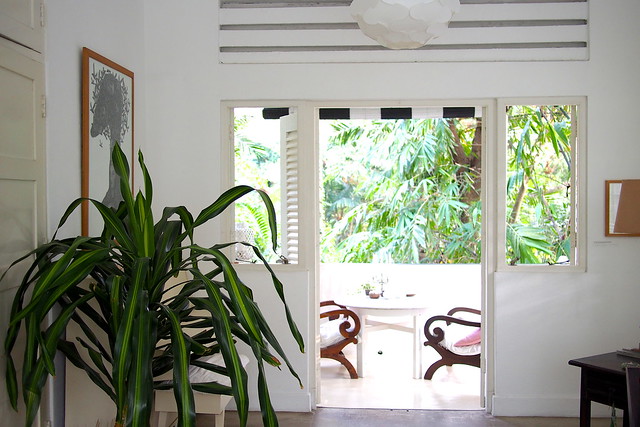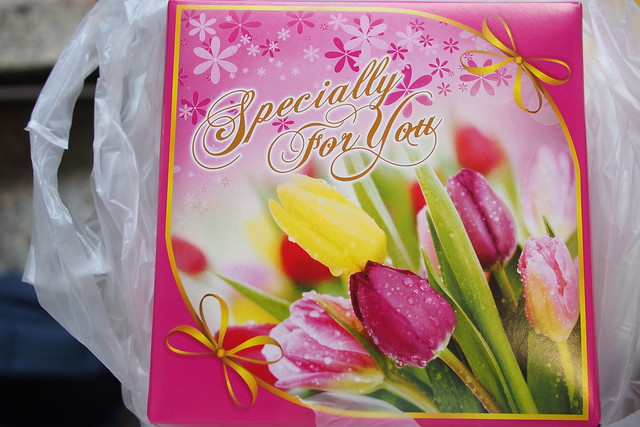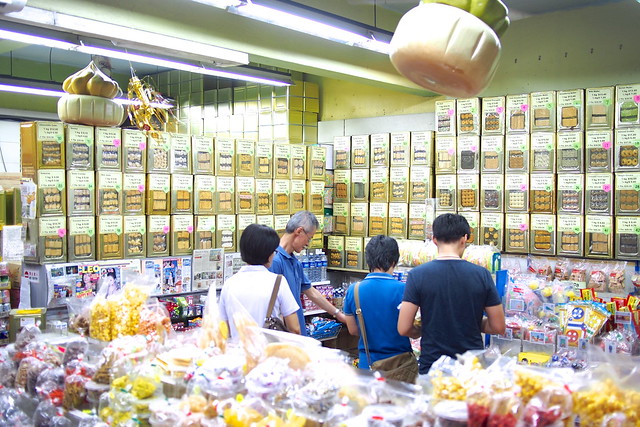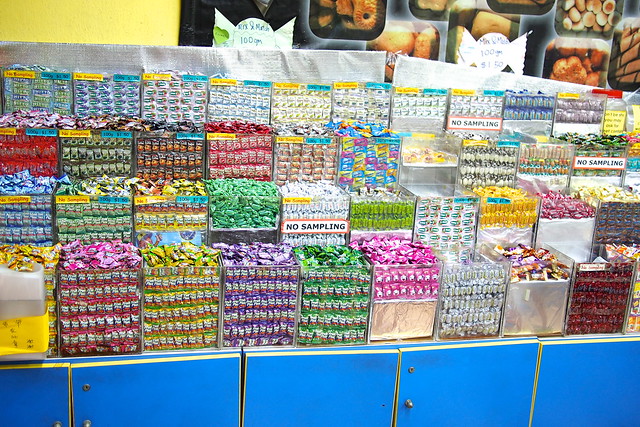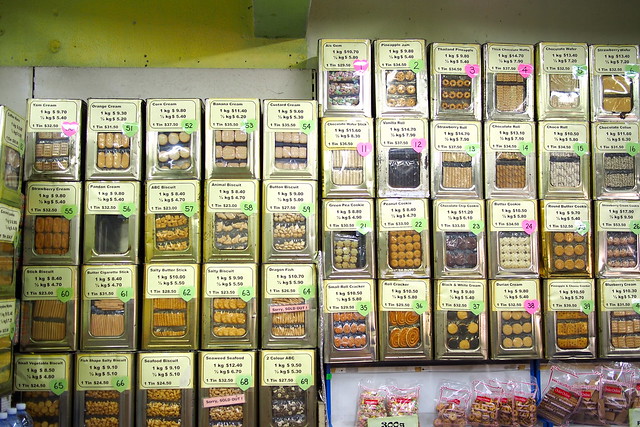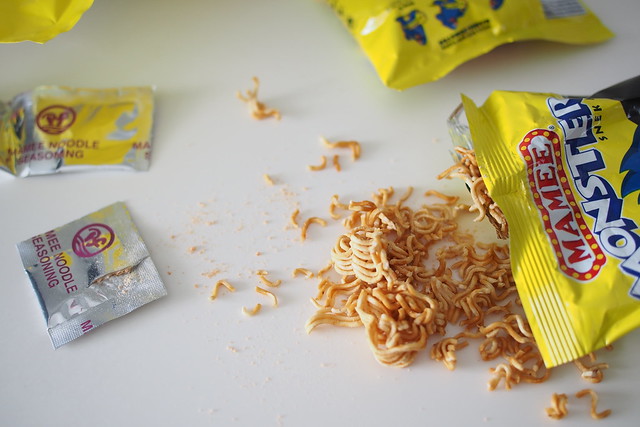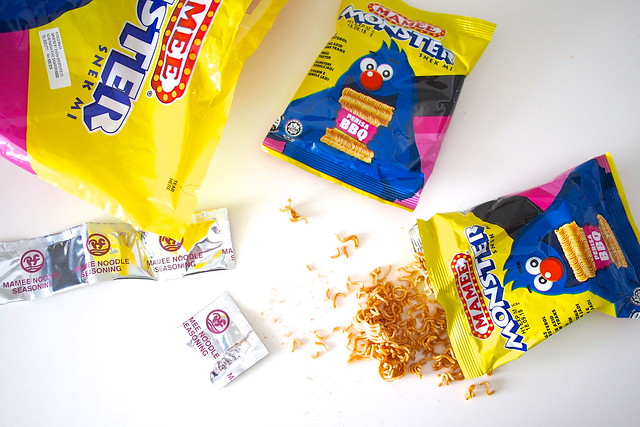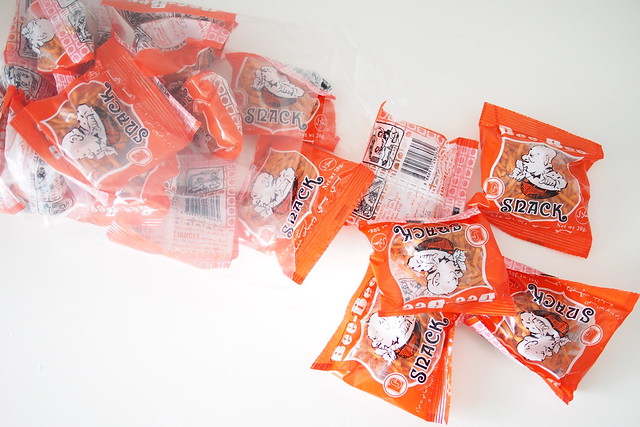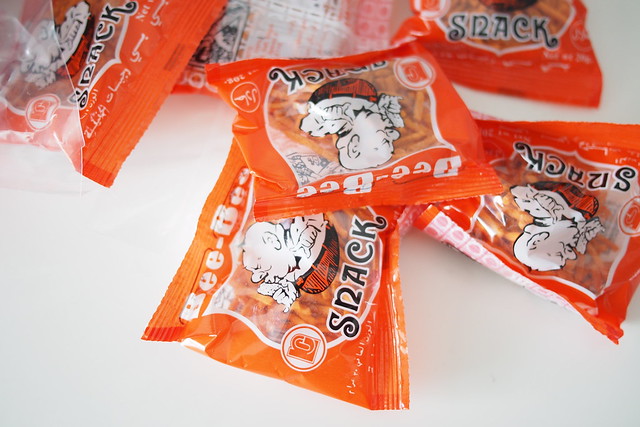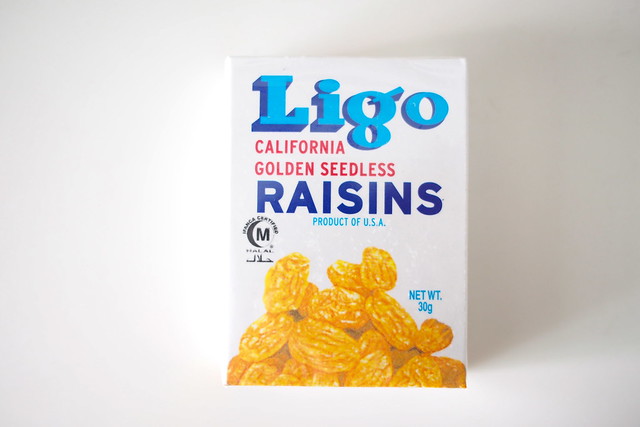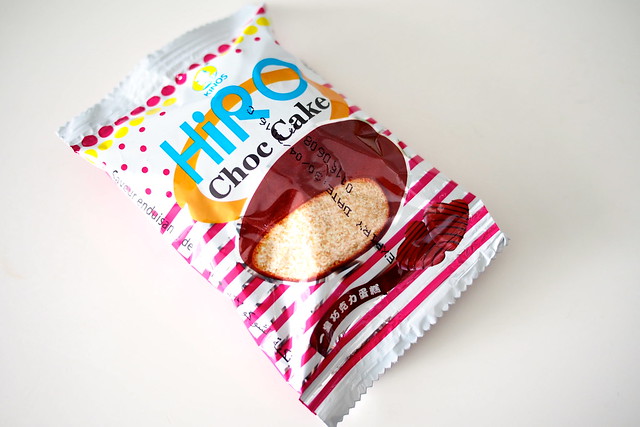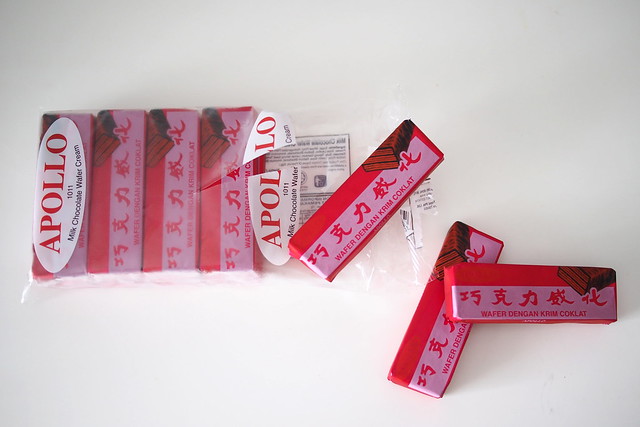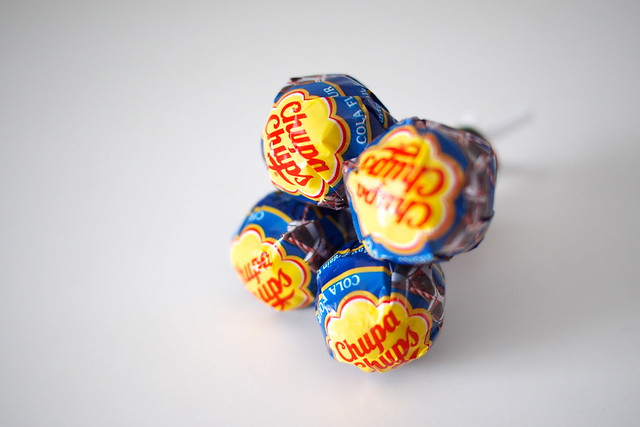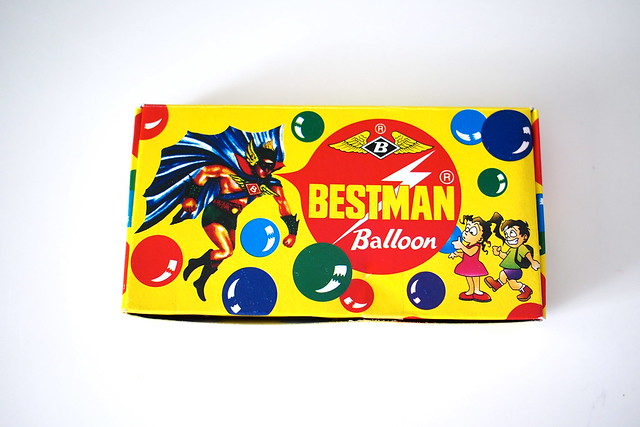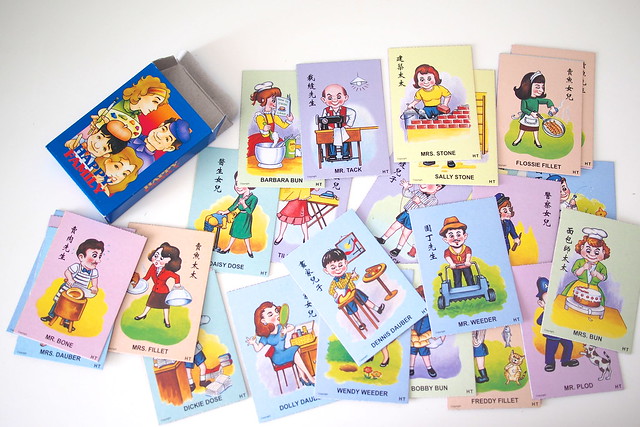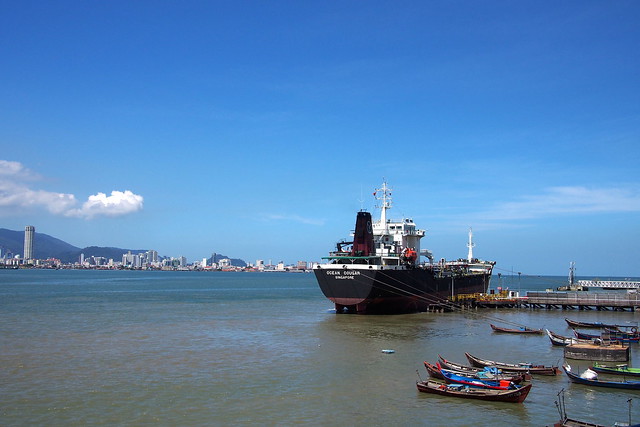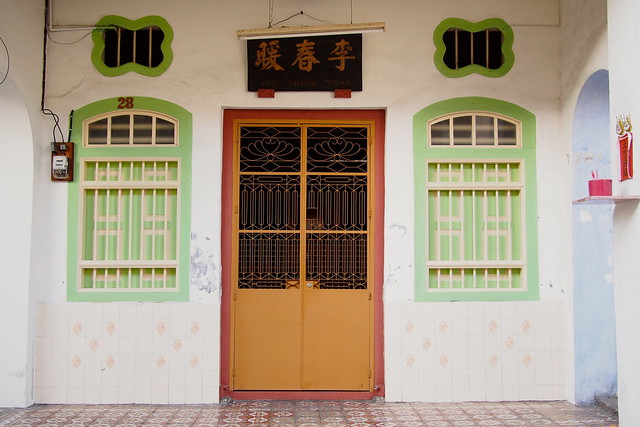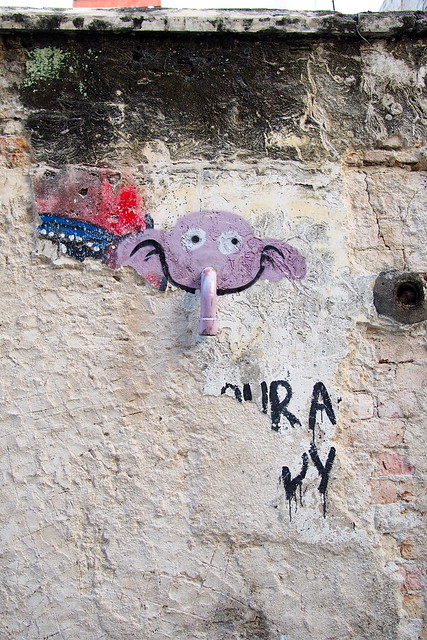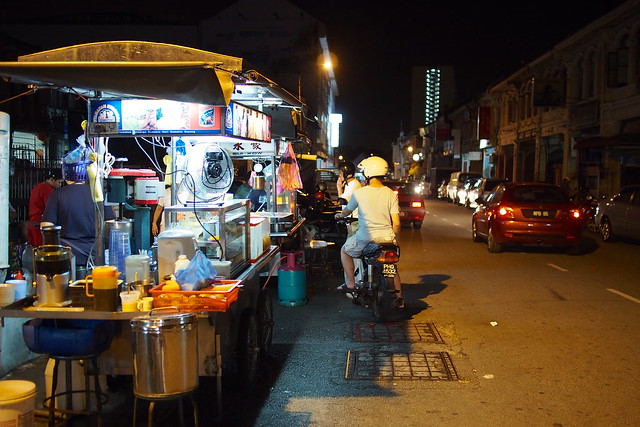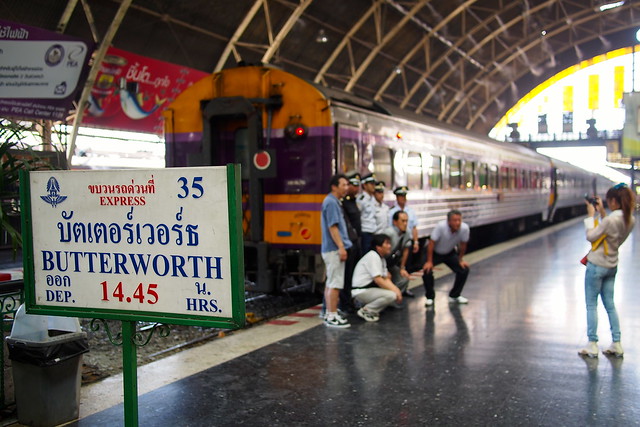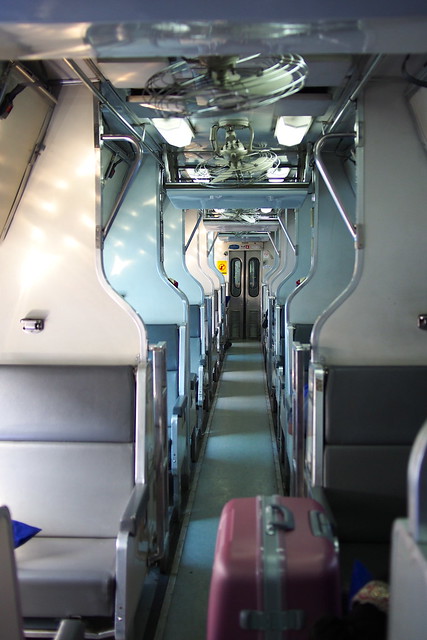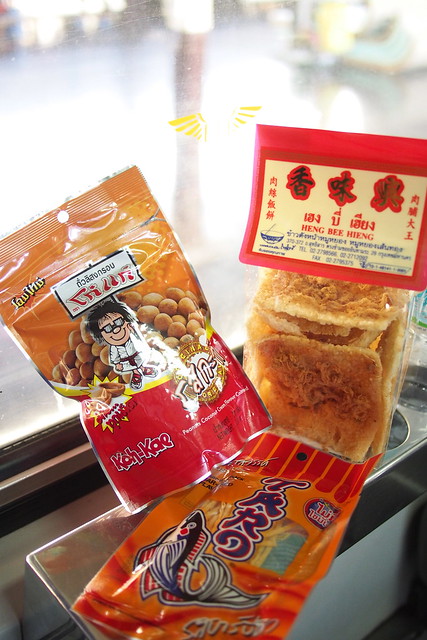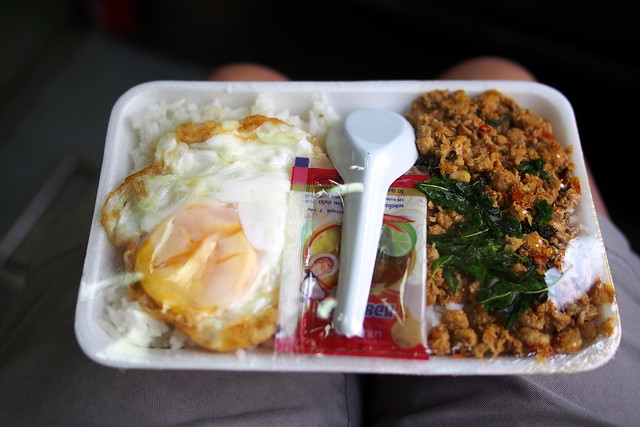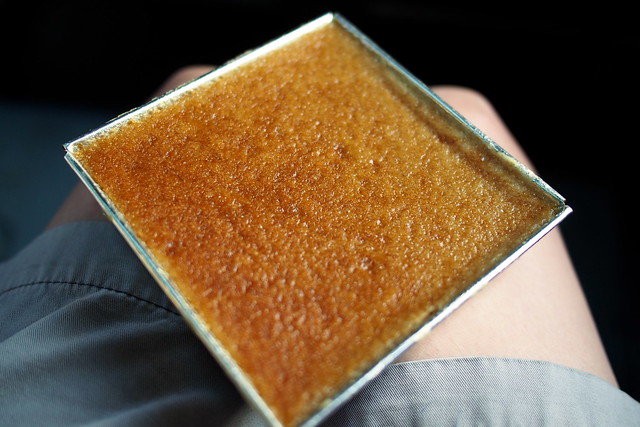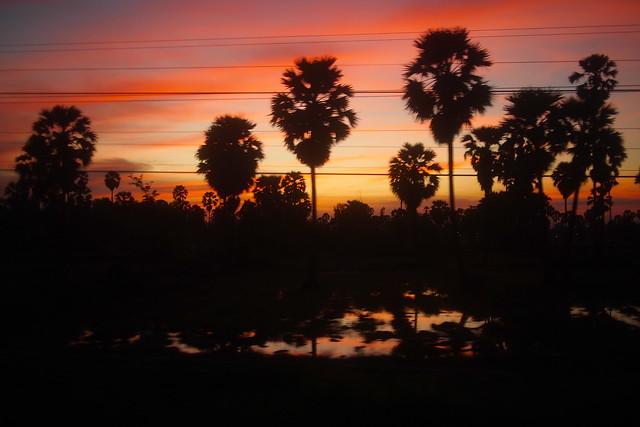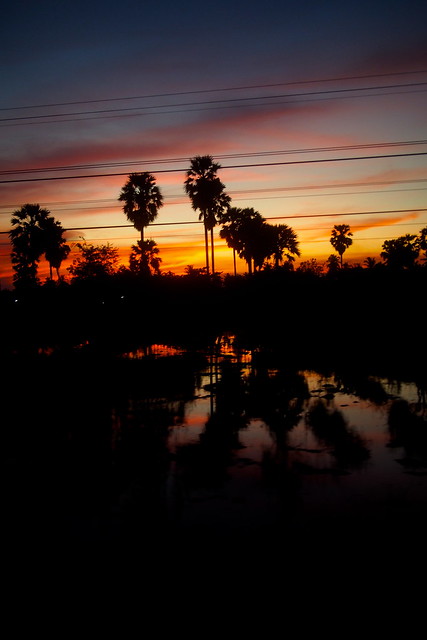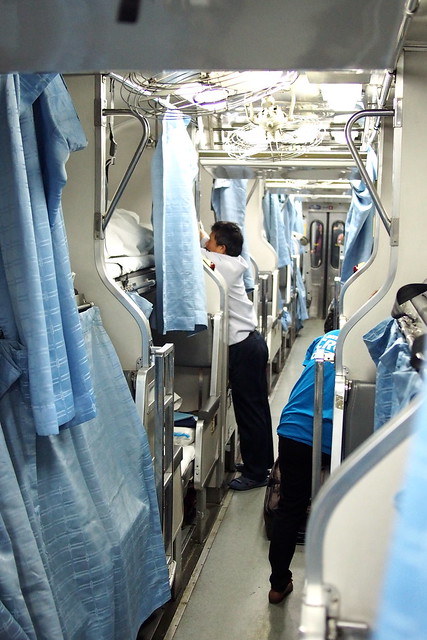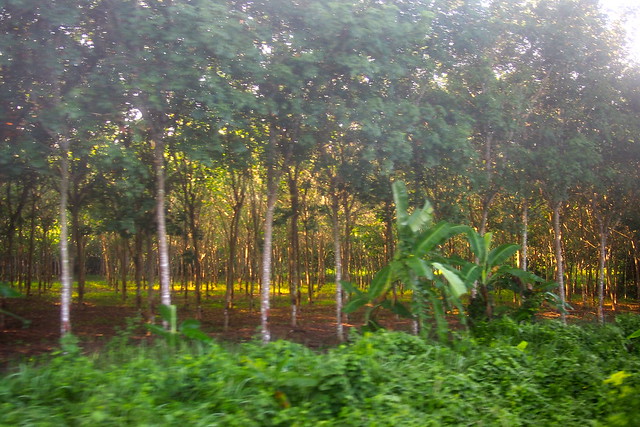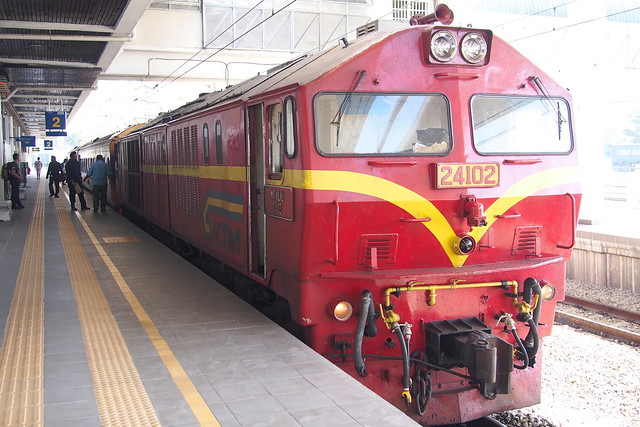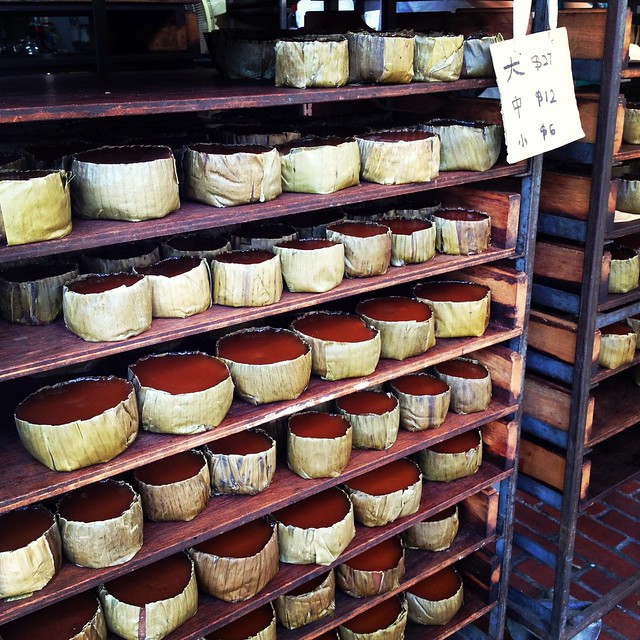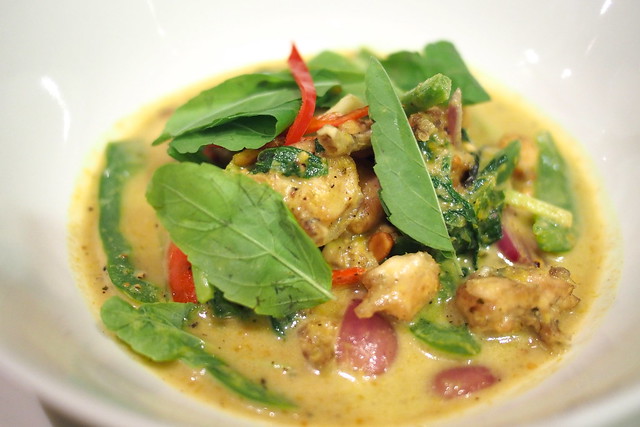London -> Harwich -> Hoek of Holland -> Amsterdam (Holland) -> Copenhagen (Denmark) -> Stockholm (Sweden) -> Riga (Latvia) -> Moscow (Russia) -> [Trans-siberian or Trans-mongolian Express] -> Ulaanbaatar (Mongolia) -> [Trans-mongolian Express] -> Beijing (China) -> Hong Kong (SAR, China) -> Guangzhou (China) -> Nanning (Guangxi, China) -> Hanoi (Vietnam) -> [Reunification Express] -> Ho Chi Minh City (Vietnam) -> Phnom Penh (Cambodia) -> Siem Reap (Cambodia)
The Nattakan Transportation Company bus from Siem Reap to Bangkok wasn’t a pleasant experience for many fellow passengers, mostly due to a very demanding group of Americans who spent the time complaining dumb these people were and then shouting the same question repeatedly, not because they didn’t understand the driver’s reply, but because he wasn’t giving them the answer they wanted.
 Later at immigration at the Cambodia-Thai border, one of them deliberately, with the urging of another of the party, cut a queue some of us had been waiting in for a long hot sweaty while, then pretended she didn’t understand the queuing system, and bitched loudly how unreasonable people could be. We all breathed a sigh of relief when they took their aggressive self-righteousness with them on a mini-bus they’d badgered the company for.
Later at immigration at the Cambodia-Thai border, one of them deliberately, with the urging of another of the party, cut a queue some of us had been waiting in for a long hot sweaty while, then pretended she didn’t understand the queuing system, and bitched loudly how unreasonable people could be. We all breathed a sigh of relief when they took their aggressive self-righteousness with them on a mini-bus they’d badgered the company for.
 I felt very sorry for a French couple with two young children who were waiting patiently and quietly for things to come together.
I felt very sorry for a French couple with two young children who were waiting patiently and quietly for things to come together.
On the next bus after the border, we had two very lovely Spanish guys and one German who chatted about how long they’d been on the road, and a couple from Shanghai who explained alot about modern Chinese culture in the big city – how money was not scarce but prestige was, and so Louis Vuitton and Hermes were now too common for the arms of the truly rich and more exclusive brands were sought. We parted, very sadly, when we arrived at Khaosan in Bangkok.
Many complain about how touristy Bangkok has become, how polluted with backpackers, so that it is no longer an authentic Thai city, but merely one set up for tourists.
Who cares? I’d say, somewhat deprived traveller that I am, come, let’s check out all that cheap plentiful delicious street food!
My first stop after a whole day of travelling without a bite to eat (on account of having no more US$ or Thai baht) was Sukhumvit Soi 38:








Because I’d known Bangkok quite well in the past, I was happy to stay a while longer to get re-acquainted and to hoover up the culinary delights of the City That Never Sleeps.
Breakfast:





 traditional breakfast of sugar on toast, steamed soft white bread with kaya, soft-boiled eggs, and a mug of iced Thai coffee at ออน ล๊อก หยุ่น On Lok Yun, 72 Charoen Krung Road;
traditional breakfast of sugar on toast, steamed soft white bread with kaya, soft-boiled eggs, and a mug of iced Thai coffee at ออน ล๊อก หยุ่น On Lok Yun, 72 Charoen Krung Road;
 on a random street, a charcoal grill topped with toast and bananas;
on a random street, a charcoal grill topped with toast and bananas;

 ข้าวเหนียวดำสังขยา khao neow dam sang kaya (black sticky rice with egg custard / kaya and coconut milk) wrapped in a banana leaf, at the Silom Soi 20 market;
ข้าวเหนียวดำสังขยา khao neow dam sang kaya (black sticky rice with egg custard / kaya and coconut milk) wrapped in a banana leaf, at the Silom Soi 20 market;



 and a range of other cooked food, and fruits at the Silom Soi 20 market – the cooked food might be consumed for breakfast, or kept for lunch.
and a range of other cooked food, and fruits at the Silom Soi 20 market – the cooked food might be consumed for breakfast, or kept for lunch.
For lunch:

 Green Chilli, Section 2, Soi 38, No. 126 in Chatuchak Market, was run by Ann, an ex-Thai Airways public relations officer. No-MSG in the food, she assured me, a choice of organic brown rice, and all the raw fresh vegetables I could eat.
Green Chilli, Section 2, Soi 38, No. 126 in Chatuchak Market, was run by Ann, an ex-Thai Airways public relations officer. No-MSG in the food, she assured me, a choice of organic brown rice, and all the raw fresh vegetables I could eat.
Afternoon snacks just anywhere along a street in Bangkok:

 crispy shredded coconut rolls
crispy shredded coconut rolls
 khanom buang (crispy Thai crepes with shredded coconut and gooey meringue) on Soi Convent.
khanom buang (crispy Thai crepes with shredded coconut and gooey meringue) on Soi Convent.
And as is necessary when navigating the crowds and the narrow indoor sois at Chatuchak Wholesale Market, something very cold:

 Hale’s Blue Boy with “frog eggs” (sadly, actually just seeds of the ocimum basilicum or sweet basil),
Hale’s Blue Boy with “frog eggs” (sadly, actually just seeds of the ocimum basilicum or sweet basil),
 the original famous Chatuchak Market coconut ice-cream, and
the original famous Chatuchak Market coconut ice-cream, and
 one of the many stalls that has jumped on the coconut ice-cream bandwagon, this one distinguishing itself by inviting customers to help themselves to the “toppings”.
one of the many stalls that has jumped on the coconut ice-cream bandwagon, this one distinguishing itself by inviting customers to help themselves to the “toppings”.
 A twirling iced teh tarik man at Chatuchak Market who drew a large crowd with his tea-mixing dance.
A twirling iced teh tarik man at Chatuchak Market who drew a large crowd with his tea-mixing dance.
And for dinner, perhaps something from Talad Rot Fai?

 salt-baked fish and, yeeeuurrr, horseshoe crabs which I refused to even contemplate since we already drain them of blue blood.
salt-baked fish and, yeeeuurrr, horseshoe crabs which I refused to even contemplate since we already drain them of blue blood.
 In the chapter of his book, The Authenticity Hoax: Culture is for Tourists, Andrew Potter, who is more serious about such matters, argues that in effect even if the Thais had retained their ethnic dresses and never built anything more than a hut, they would still fail to be authentic.
In the chapter of his book, The Authenticity Hoax: Culture is for Tourists, Andrew Potter, who is more serious about such matters, argues that in effect even if the Thais had retained their ethnic dresses and never built anything more than a hut, they would still fail to be authentic.

 There has been the idea, throughout human history, on possibly all continents, that a particular society should be internally homogeneous in traditional art forms, festivals, language etc. Yet, history has shown that all living societies continually change as they interact with other societies in trade, marriage, warfare.
There has been the idea, throughout human history, on possibly all continents, that a particular society should be internally homogeneous in traditional art forms, festivals, language etc. Yet, history has shown that all living societies continually change as they interact with other societies in trade, marriage, warfare.
 So when one seeks, artificially, to preserve these things, they become inauthentic since the real society has moved on. And even if it had not, the fact that tourists had travelled just to see these things, and the fact that the audience isn’t indigenous means that the act or event is divorced from its historical and cultural significance and has in fact turned into ” museum piece” to be gawked at.
So when one seeks, artificially, to preserve these things, they become inauthentic since the real society has moved on. And even if it had not, the fact that tourists had travelled just to see these things, and the fact that the audience isn’t indigenous means that the act or event is divorced from its historical and cultural significance and has in fact turned into ” museum piece” to be gawked at.






 But what Potter is more concerned with is the effect on globalisation on the ethos or worldview of a society. “For all the benefits that the outside world can bring, it is possible for a society to be overrun by external influences, diluting and undermining the culture to the point where little remains of the original ethos. The possible destruction of a unique and probably irreplaceable worldview is one of the real and tragic consequences of globalisation. What makes it all the more heartbreaking is that the forces that lead to the destruction are both thoroughly legitimate and almost impossible to control or impede in a free and open society. Individuals have the desire and the right to improve their lives through trade, to adopt new technologies, to explore other ways of seeing the world. This process by which individuals acting in their own interest collectively ensure the demise of their own ethos is the great tragedy of the cultural commons.” [Comment: objectively, why would this be tragic?]
But what Potter is more concerned with is the effect on globalisation on the ethos or worldview of a society. “For all the benefits that the outside world can bring, it is possible for a society to be overrun by external influences, diluting and undermining the culture to the point where little remains of the original ethos. The possible destruction of a unique and probably irreplaceable worldview is one of the real and tragic consequences of globalisation. What makes it all the more heartbreaking is that the forces that lead to the destruction are both thoroughly legitimate and almost impossible to control or impede in a free and open society. Individuals have the desire and the right to improve their lives through trade, to adopt new technologies, to explore other ways of seeing the world. This process by which individuals acting in their own interest collectively ensure the demise of their own ethos is the great tragedy of the cultural commons.” [Comment: objectively, why would this be tragic?]
This has led in the last hundred years to liberal thinkers like Immanuel Kant popularising the idea of cosmopolitanism. “The cosmopolitan rejects both particularism and localism, seeing instead his or her loyalties and obligations as extending to the entire human race. But this is not with the aim of homogenising all mankind, rather, they thought that variety was valuable. “For [John Stuart Mill], “diversity matters…his argument was straightforward: just as different plants and animals flourish in different physical environments, different people flourish in different moral and cultural environments. One man’s meat is another man’s poison, and unless “there is a corresponding diversity in their modes of life, they neither obtain their fair share of happiness, nor grow up to the mental, moral, and aesthetic stature of which their nature is capable.””


 However, communitarians have been pushing back at what they see to be liberal self-centred-ness and narcissism. The Kantian liberal’s goal is the maximisation of individual freedom; the Mill-ian liberal’s aim is the maximisation of individual happiness or welfare. Paramount importance is placed on satisfying individual needs. “[But] it’s not all about you”, the communitarian says, “there are common goods that transcend our individual wants, that command our allegiance, and might require our sacrifice.”
However, communitarians have been pushing back at what they see to be liberal self-centred-ness and narcissism. The Kantian liberal’s goal is the maximisation of individual freedom; the Mill-ian liberal’s aim is the maximisation of individual happiness or welfare. Paramount importance is placed on satisfying individual needs. “[But] it’s not all about you”, the communitarian says, “there are common goods that transcend our individual wants, that command our allegiance, and might require our sacrifice.”
Potter suggests that liberals and communitarians have been talking at cross purposes: “The cosmopolitans are talking about the importance of certain liberal principles, while the communitarians are concerned about the effects of that liberalism on values. The principles/values distinction is one that we don’t usually make in our everyday language, and it is not uncommon for the terms to be treated as virtual synonyms…”
“When we talk about principles, we are referring to the general rules that govern our sense of right, such as the constitutional statements of due process, equality, and the freedoms of religion, speech, and association that support a liberal society. Values, on the other hand, refer to our sense of what is good to do or believe. Values are what give our lives meaning or purpose.” So the two are not mutually exclusive. In the Charlie Hebdo shooting incident, for instance, the liberal principle of the freedom of speech would agree that you could express your thoughts should you choose to do so, and communitarian values would determine the manner and method by which your thoughts would be expressed.
But what of communitarian values in a diverse community? Voltaire thought that religious diversity was the foundation of public order rather than a threat, saying,”If there were only one religion in England, there would be the danger of despotism, if there were only two they would cut each other’s throat; but there are thirty, and they live in peace.” He was referring, however, to 30 version of Protestantism.
Where there is true multiculturalism, Robert Putnam has found that large-scale immigration and increased diversity within a society has made people “act like turtles” and become “less open and more distrustful of one another”. But the solution to this is not less diversity, rather Putnam argues that a society’s long-term project would therefore have to be the deliberate construction of a broader and more inclusive civic identity.
[Comment: this is something the pioneers in Singapore have sought to do for its ethnically and religiously diverse population. The racial riots of only a few decades ago is still fresh in the minds of the older generation, but it is tragic that many of the younger generation have scoffed at this as mere PAP propaganda, as they sneer at anything any of arm of the government says, regardless of content. A recent issue has been a petition for Thaipusam (a Hindu festival) to be made a public holiday in Singapore. Not everyone who supported it was Hindu, some were just on the extra holiday bandwagon. This well-worded reply came from SIngapore’s Ministry of Manpower:
We appreciate the perspectives shared by many Singaporeans on whether Thaipusam should be reinstated as a public holiday.
As many have noted, Thaipusam was a public holiday until 1968. The prospect of the British withdrawal and the need to compete for a living in world markets necessitated many changes in the country. The government decided to reduce the total number of public holidays, amongst other things.
The decision on which public holidays to give up in 1968 was reached only after careful consultation and discussions with various religious groups. The Muslims chose to give up Prophet Muhamed’s Birthday as well as an extra day for Hari Raya Puasa. The Christians, who had to give up two days as well, chose to give up the Saturday after Good Friday and Easter Monday. The Hindus had to choose between retaining Thaipusam or Deepavali as a public holiday, and chose the latter.
These were difficult decisions for the leaders of each faith, with something of value being given up by each group in the larger interest. The Buddhists, who comprised the largest faith and had only one public holiday to begin with, Vesak Day, were not asked to offer any cuts. Some groups continued to celebrate religious events of significance to them, such as Vesakhi for the Sikhs and Lao-Tzu’s Birthday for the Taoists, without these being public holidays.
The resulting 11 public holidays that we now enjoy is neither high nor low when compared to other countries. It is the same number enjoyed by New Zealanders, Canadians and the French, among others. Our closest neighbours, Malaysia and Indonesia, enjoy a few more days than we do, but we have a few more than developed countries like the United Kingdom and Germany.
But beyond numbers and economics, our calendar of public holidays is a reflection of our multi-ethnic, multi-religious society. There is much value and meaning attached to each of our ethnic and religious festivals, including Thaipusam, both among that particular group and Singaporeans generally.
But any move to reinstate any one festival as a public holiday will immediately invite competing claims, and necessitate considerable renegotiation with all communities. Balancing the wishes of each community will not be a simple matter. Neither can we simply re-allocate public holidays by ethnic group, as amongst both Chinese and Indians we have citizens of a few different faiths.
While we will always ensure that all Singaporeans can practise their faiths freely, it is impractical to make all important festivals of all faiths public holidays. But it must always be possible for Singaporeans of all faiths to make arrangements to observe their respective religious festivals. We encourage all employers to show understanding and flexibility in this regard.
We have learnt to live harmoniously with each other with this balanced approach, where everyone makes some compromises for the greater good. It has served us well for the better part of five decades and remains the best way for Singapore.
Alvin Lim
Divisional Director, Workplace Policy & Strategy Division
Ministry of Manpower
To which at least one Singaporean on Facebook commented, without reason: “absolute crap!” and another, illogically in light of the explanation given, complained of unfair treatment of Hindus because they were not the main religion in Singapore.]

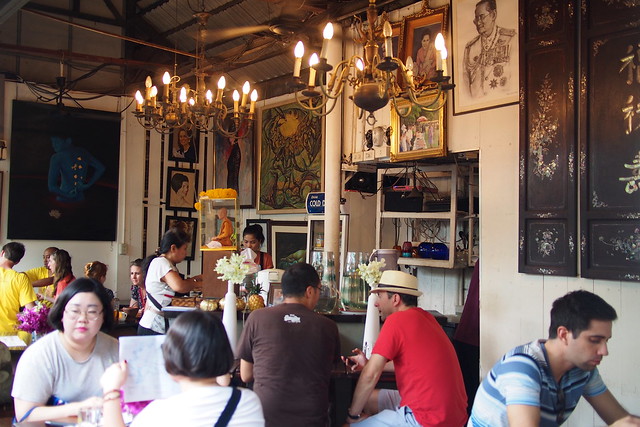 Potter suggests, however, that the reason for this is less “racism, classism, prejudice, or any xenophobic refusal to associate with the “other””. Instead, the ethnocultural society starts with few shared norms. In cities, the absence of a small, close-knit society where there might have been regular interaction that facilitates enforcement of existing social norms, the breakdown of the economy of trust is accelerated. (It is this community of trust that yuppies yearn for when they move to the suburbs, at least in an American/Canadian context.)
Potter suggests, however, that the reason for this is less “racism, classism, prejudice, or any xenophobic refusal to associate with the “other””. Instead, the ethnocultural society starts with few shared norms. In cities, the absence of a small, close-knit society where there might have been regular interaction that facilitates enforcement of existing social norms, the breakdown of the economy of trust is accelerated. (It is this community of trust that yuppies yearn for when they move to the suburbs, at least in an American/Canadian context.)
So while seekers of authenticity wish to preserve Havana or Bhutan romantically in yesteryear, Potter argues that this narrow and selfish desire misses “any sense of what is gained in the way of political freedoms, increased material wealth, and greater intellectual and creative opportunities…it ignores the way that cosmopolitanism represents not only a material advance, but also a form of moral progress.”
Societies do not exist to be “compatible with someone’s preferred account of what constitutes an authentic culture…”
*part of a read-through of Andrew Potter’s The Authenticity Hoax
**also part of a photo-journal of my journey overland from London to Singapore
 But the woman on the SBS bus (cf. man on the Clapham omnibus) would be screaming (silently, so as not to disturb others and fall victim to a Stomp-er): artificial food colouring! Glutinous flour! Empty carbs! Refined sugar! Weight gain! Poor diet! Unhealthy eating! Ugliness!
But the woman on the SBS bus (cf. man on the Clapham omnibus) would be screaming (silently, so as not to disturb others and fall victim to a Stomp-er): artificial food colouring! Glutinous flour! Empty carbs! Refined sugar! Weight gain! Poor diet! Unhealthy eating! Ugliness!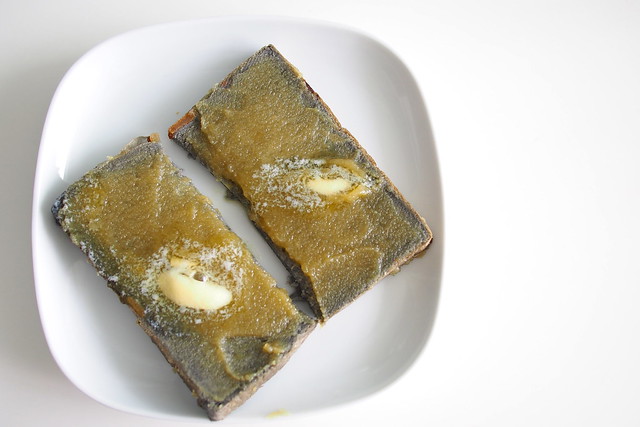 Undoubtedly, contemporary Christians too are stewing unthinkingly in the authenticity culture. The authentic Christian, we assume, is someone who:
Undoubtedly, contemporary Christians too are stewing unthinkingly in the authenticity culture. The authentic Christian, we assume, is someone who:

































